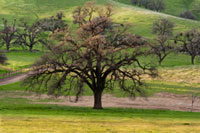Family Trees: Syncing, GEDCOM and Backups
Electronic family trees are a terrific way to capture what you learn about your ancestors. They can help you organize and share what you have found. Once organized, you can analyze what you know and what you need to find.
At a recent class, there were a lot of great questions about family trees. Thinking about family trees, a blog post might help to sort out some of those answers.
While there is a lot to consider about putting a tree online or keeping a family tree on your own computer, there are definitely reasons to do both!
Should I backup my online tree?
There is an expectation that an online tree will be backed up by the hosting website. But what if that website gets sold to another company? or undergoes a cyber attack and has a loss of data? or decides that it no longer wants to host family trees?
It is always a good idea to backup your online tree. If you have it on your personal computer, you can still use the tree during a time when you are not connected to the Internet. You also have access to your tree if one of the situations in the above paragraph occurs.
Syncing (synchronizing) the trees online and on a home computer can be thought of backing up the tree.
GEDCOMs
You can certainly download a tree from Ancestry.com or FindMyPast.com , and the format will
GEDCOM is an acronym for Genealogical Data Communications (but I have seen it referred to as Genealogical Electronic Data Communications).
Think of this as the most basic, stripped down form of your tree. It includes data about the individuals including sources, and linkages between individuals. In fact, it is a text file that follows the rules of a format that all family tree programs understand. The extension for this type of files is .ged
Imagine you wanted to transfer text from one fancy word processing program to another, but they don’t open each others file format. So, you might decide to save your document as a plain text file, that can be opened by another word processor. Of course, that simple text file would not have all the images you inserted and detailed formating that you might have done in your original.
Sync
To synchronize, or sync, means to make your online tree and the one on your computer match.
This comes in handy when you are attaching people, facts and documents to an online tree. That way you can get those additional people, facts and documents into the tree on your computer.
If you have the same tree online and on your computer, you can consider that a backup.
But, some people like me use the online tree to collect data, while the one on my computer has a lot more information, especially about living people. Just be aware whether or not the family tree program on your computer allows you to choose to upload or download your tree from the Internet.
Downloading GEDCOMs
For many of your online trees, you have the ability to download a GEDCOM that contains all the people and facts from the tree. Remember, GEDCOMs do not have all the media attached, so you will not get the pictures and documents downloaded.
Note: When there is one tree for everyone on the website, a GEDCOM cannot be downloaded.
Ancestry.com and FindMyPast.com Family Tree -> View all trees next to each of your trees are three buttons: Settings, Export, Delete. You will Export your tree.
How-to Information
After the class, one of the attendees and I sat down to look for videos to show how to do all these tasks. Since you know I use Google quite a bit, you will not be surprised to learn that I searched for the following terms:
- download GEDCOM from ancestry
- rootsmagic sync with ancestry
- rootsmagic sync with familysearch
then selected the link to show results in the Video category.
There were how-to videos for all the family tree programs.
Good luck and let me know how you do!



